Are you besieged with slugs this year?
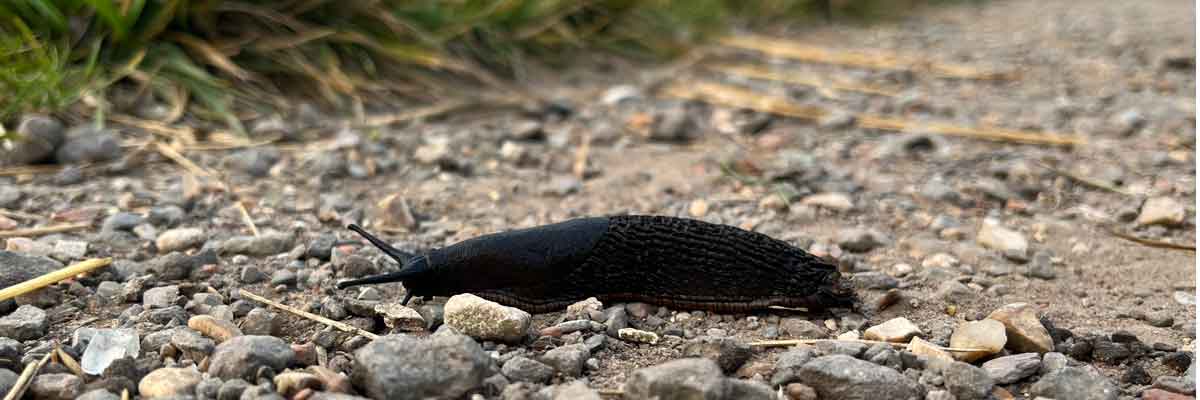
On the off chance you haven’t noticed an invasion of slimy friends in your garden this year, here’s a huge indication that our plants are under siege now more than ever: the RHS has received three times more inquiries about slugs and snails up to June this year than it did during the same period last year. Online searches involving slugs are almost double what they usually are around this time of year, too.
If you’re understandably frustrated about those tell-tale holes in your leafy foliage stunting the hard-earned growth of your plant, read on; we’re here to tell you everything you need to know about the slug and snail plague of 2024, including the eco-friendly ways in which you can deter them.
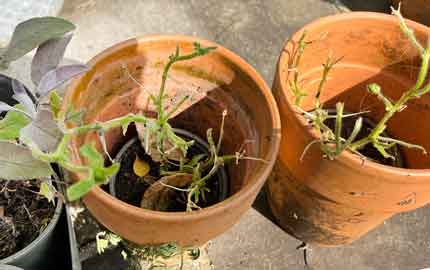
Slug Damage
Is so demoralising! But don't despair there are plenty of eco-friendly ways to protect your plants from these pesky critters
-
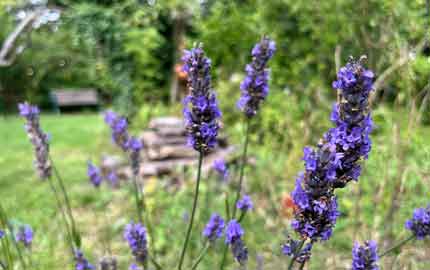
Slug resistant plants
Lavender and many other fragrant plants don't tend to be ravaged in the same way as seedlings and hostas
-
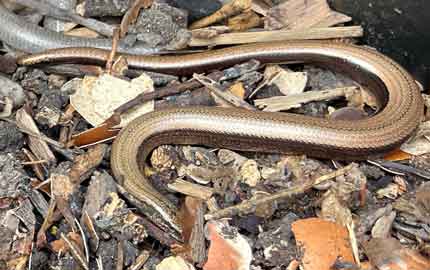
Befriend Natural predators
Frogs, Newts, Toads and slow worms are all great at keeping the slugs and snails down
Why are slugs and snails thriving?
Gastropods (that’s the slug and snail varieties of mollusc) have always been something of an enemy to the gardener, from professional plant-whisperers to the humble beginner. However, as those that thrive in damp or moist, yet warm, conditions, it’s no surprise our mild winter and wet spring and early summer has been particularly advantageous to slugs and snails, so numbers have risen alarmingly.
What damage can slugs and snails do?
To put it simply, they eat, and then they eat some more. Preferring to munch on your precious plants at night, they hide during the day, ideally within soil or under pots and slabs, before darkness falls and signals dinner time. They eat to the point of destroying the plant, often at their most crucial seedling stage.
What plants are most susceptible to slug and snail damage?
As we mentioned, young plants are a particular delicacy for slugs and snails (especially vegetable plants), as are any varieties with soft, fleshy leaves, like a Hosta. They tend to turn their slimy snouts up at anything with thick or fragrant foliage.
How can slugs and snails be discouraged humanely?
To prevent the disappointment of discovering, day after day, that slugs and snails have been at your plants again, you may be in the market for deterrents. As a gardener, you may also be keen to keep things civil between you and the creatures you find yourself up against, and are loath to use chemicals, or otherwise harmful or inhumane tactics. No doubt you’ve come across suggestions like eggshells, and even salt. In which case, we’ve got some suggestions for you:Favour plants that they don’t like
If you’re keen to simply have a garden that doesn’t appeal to slugs and snails, you’d do well to research the kinds of plants they’re not fussed about before committing planting. Here are just some of the plants that slugs and snails don’t like:
- Ferns
- Hydrangeas
- Lavender
- Fuchsia
- Salvia
- Foxgloves
- Fennel
- Geraniums
Plant seedlings as late as you can get away with
Slugs love fresh young leaves, so, if you can, wait until your young plants have matured a little before leaving them to fend off the garden pests. A greenhouse or windowsill may be ideal, depending on the plant.
Research slug resistant varieties
Different kinds of the same plant family may be more slug resistant than others; take potatoes for example. Ambo, Cara, Desiree, and Romano are all examples of potato plants that don’t tend to attract as many snails and slugs as others.
Round them up
If you know the slugs and snails are going to come, you can evict them when they’re not in mealtime mode. This can take the form of leaving a slate close to your cultivated area and lifting it during the daytime to reveal the offenders. From here, we’d strongly suggest moving them to a suitable habitat well away from the area you’re trying to protect. This may have to become a regular occurrence!
Encourage natural predators
Okay, so this isn’t great news for the slugs and snails, but it is at least a natural prevention; introduce their predators into the garden by creating habitats they’ll like. For example, a nature pond and log piles will encourage frogs, newts, toads and slow worms, who are all known to snack on molluscs, and bird feeders will see the likes of blackbirds begin to treat your borders like a buffet.
Remove hiding places
A build-up of pots or other hardware could make for a comfortable place for snails and slugs to spend their days, so a decent tidy up could make your garden less hospitable for them.
Plant protection
If all else fails, you’ll want to move onto robust ways in which to stop the most determined pests from gaining access to your plants, at which point it’s time to consider the likes of cloches (homemade from plastic bottles), wool pellets, and slug collars.
Say no to pellets
Blue slug pellets made with Metaldehyde are a massive no-no in our book. Yes, they kill slugs, but they also kill everything that feeds on them, including birds, small rodents and hedgehogs; they’re dangerous for pets and children too. Slug pellets also contaminate the soil and waterways and should therefore be avoided at all costs. The good news is there are plenty of other alternatives.
Beer traps
A saucer of beer near your most precious plants or even sunken into the border is a surprisingly effective way of drawing out those pesky critters. Slugs and snails can’t seem to resist a tipple, whether it’s lager or stout, strong ale or even the non-alcoholic options, gardening experts all have their favourites but in our experience the slugs are not too fussy, and this simply works. Pop it out overnight and collect and dispose of the evidence in the morning - straight into your compost heap is fine.
Biological warfare
Nematodes have become more and more popular over the last few years as a safe and environmentally friendly way to control slug populations.
We’ve been using them at our nursery and in our own gardens for over a decade and they are a great way to keep slugs (and to a certain extent snails) to a manageable level. Nematodes are tiny eelworms that already exist in our soil and feed on slugs from the inside out. They can be sent in the post and the paste is simply mixed with water and added to the soil to boost the natural nematode populations. They are safe to use with young children and pets around and are completely safe for birds, rodents and other insects in the garden too.
Slug nematodes work best on juvenile slugs and eggs and should be applied when the soil is wet (not a problem at the moment) and warm enough (above 5C). A preventative treatment in the spring can be beneficial in protecting your young seedlings and you can apply again at 6-week intervals if you need to. There are lots of great suppliers of biological controls and nematodes now but our favourites is Lady Bird Plant Care.
If you are beset with slug monsters, we’d recommend using a beer trap to catch the biggest slugs and snails but also doing a nematode treatment to catch the next generation of eggs that the mama slugs will be laying underground.
Are balconies and window boxes safe?
If your outdoor plants enjoy something of a view, you may think you don’t need to worry about mollusc misery - think again. Snails can, in fact, climb up to several metres, particularly if you’re growing one of their favourites up there. Their signature slime trail is a giveaway, so keep an eye out around your plants for signs that you may need to heed our advice above.
Are there any advantages of a healthy slug and snail population?
While we curse them for much of the year, slugs and snails do have a part to play in the health of your garden, believe it or not. They’re actually a valued part of the composting process, which sees them chewing up plant waste and helping to turn it into fresh compost for gardeners to use going forward. If you want somewhere to put the slugs and snails you round up, why not start at the compost heap?
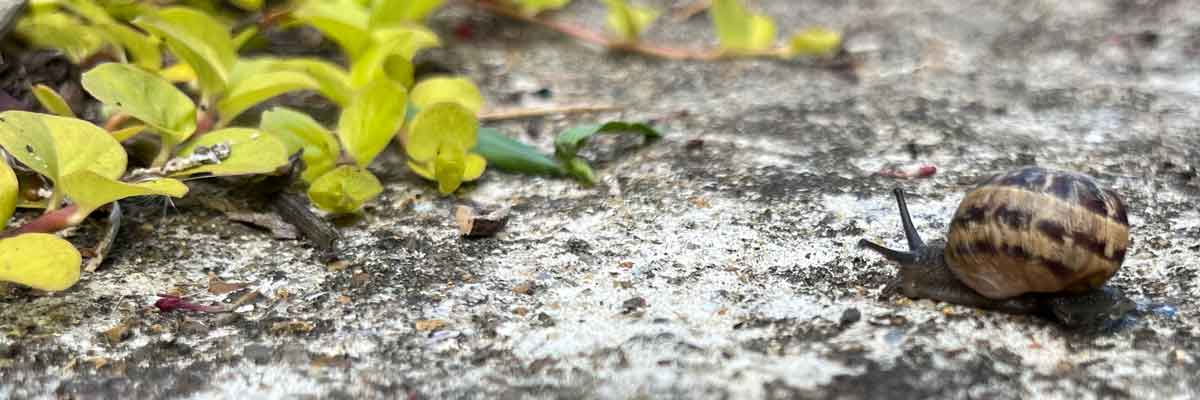
To conclude
Slugs and snails are part and parcel of the gardening experience, and unfortunately, their management is something of an exercise in trial and error. However, it’s important to remember the role they have in our garden’s ecosystem, and it’s within our power to guide them away from our precious plants without using anything harmful to them, or to the wider environment.

